This article appeared in Grass Roots No.281 February/March 2024
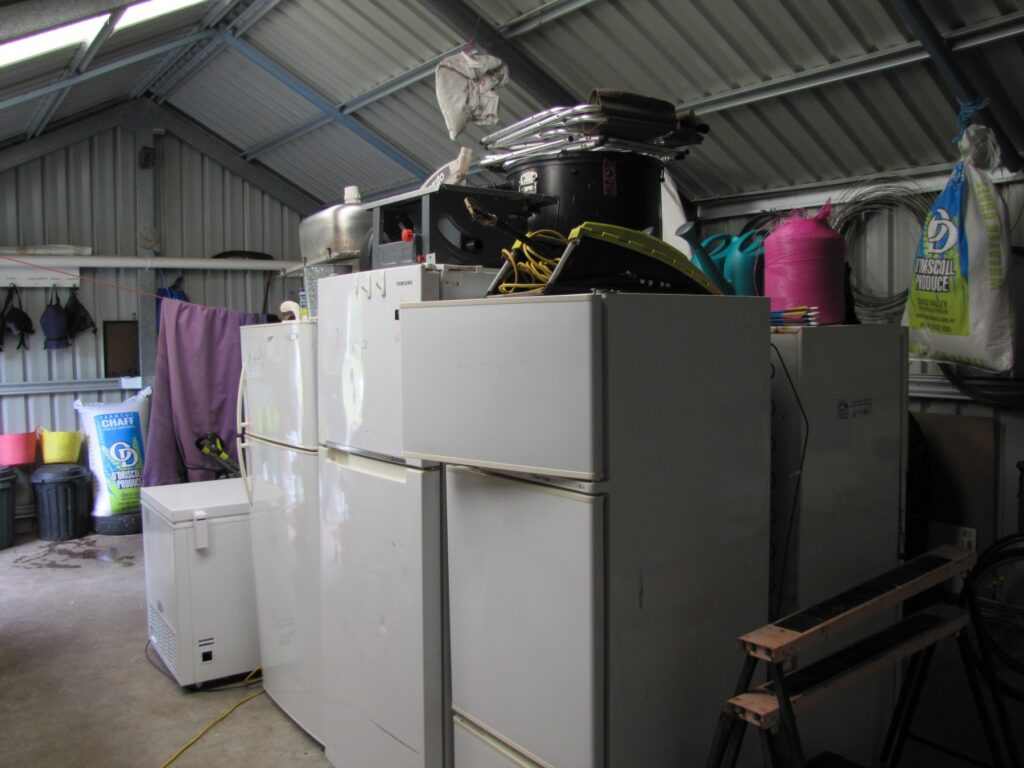
How would you like a clean, organised shed with dust and rodent proof storage cupboards that cost next to nothing and repurpose items otherwise sent to landfill?
Our farm shed has over the past month received a make-over that has transformed it from a rat-infested, dirty, haphazardly organised space in which I was tripping over and rummaging through bins, boxes and repurposed feed bags to find things while my stomach turned, to a neat, tidy, super clean veritable library of farm items that is a pleasure to use and easy to keep clean and organised long-term.
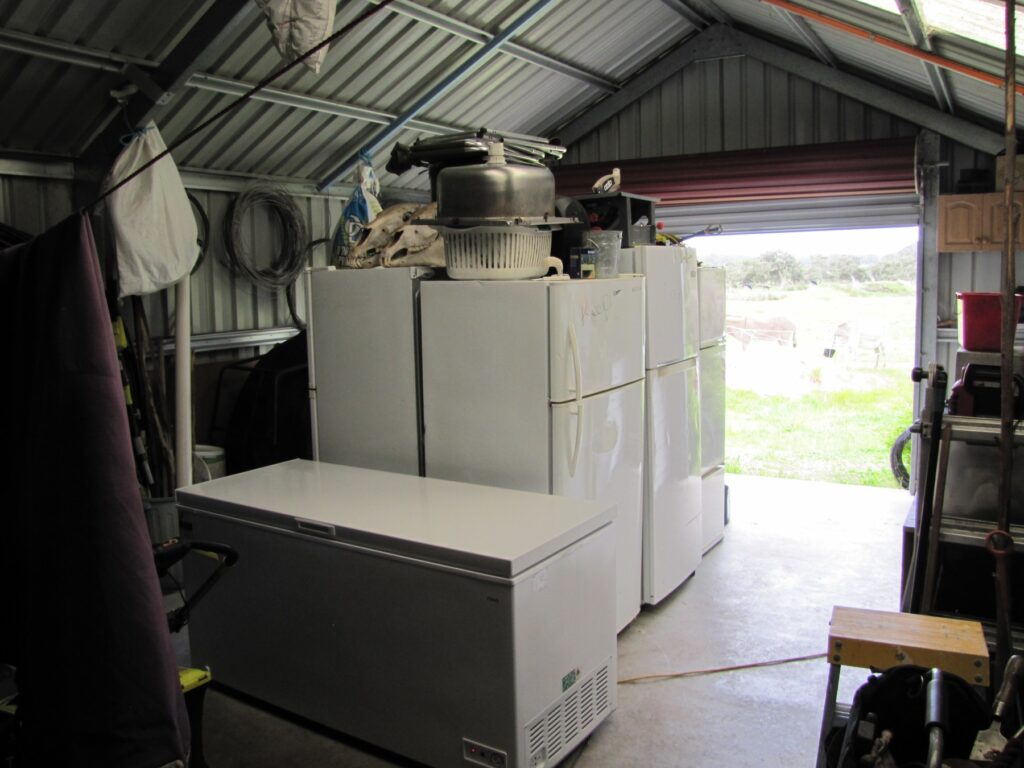
I wonder how our shed ever got so bad in the first place, since I am a neat freak and abhor wasting my finite life span on looking all over the place for the one missing thing I desperately need to do a particular job. But we started and have continued on a shoestring, and in the beginning, we were fully stretched putting in the homestead infrastructure. We spent 5 years owner-building, first the shed and then our eco-friendly farmhouse, while also tending to fencing, livestock, stewarding 50 hectares of beautifully biodiverse sclerophyll woodlands/heathlands, establishing a permaculture food garden, planting thousands of native seedlings to make shelter belts and wildlife corridors in hitherto bare pasture, and working the equivalent of one fulltime job between us off farm. The budget was always razor thin and time scarce; this is a typical experience for ordinary people making a tree change.
We furnished the house and the shed mostly with things we already had, or got second-hand. This was a conscious decision; the industrial manufacturing of anything at all depletes natural resources, destroys wildlife habitat and causes pollution. All material possessions come at a cost, not just to our wallets but to the Earth. We’ve always been frugal, avoided buying things, and if we needed something, focused on quality and durability, preferably second-hand. We reduce, re-use, re-purpose, mend and make do, and grow as much of our own food as we can. We have very good basics, including wonderful food, and try to buy farmer-direct what we don’t grow ourselves. It’s a good and rich life, on surprisingly little money.
The shed was initially fitted out with some plastic drums for rodent-safe storage of animal feedstuffs and delicate equipment, excess kitchen cupboards from our second-hand kitchen, a second-hand chest of drawers for tools, and a workbench we cobbled together from building scraps. Long-handled tools and spare sheets of building materials were arranged against the walls. Other things lived in cardboard boxes and feed bags or simply on the floor. This inevitably meant things got dusty, and rodents scouted for homes. We baited the closed interior and periodically collected carcasses.

Multiply this by 12 years with occasional clean-outs, followed by a district-wide rodent plague. The tool drawers were invaded and filled with droppings and mummified carcasses. I began to avoid opening the drawers, and in time, entering the shed. This could not go on.
Then I had a brainwave I wish I’d had a decade sooner. I remembered a farm shed I’d seen as a child where a broken-down chest freezer had been kept for tool storage. The interior of this freezer always stayed pristine, even when everything else was covered in dust and gnawed by mice. I went hunting for dead fridges. Our independent whitegoods shop had just closed; the big chain store had only one. At the landfill in Albany there were a dozen suitable fridges but staff told us re-homing them was against policy. We were advised to write a letter to the city administration to ask for an exemption.
We tried the Denmark waste facility next town along, which has a famous, fantastic community re-use/recycle programme. There, smiling people said, “Sure, how many do you want? Take your pick. We’ll get them de-gassed for you.” I picked out six fridges and we made a $50 donation. Back home I removed every single item from the shed, thoroughly cleaned the entire building, had a couple of bonfires, then cleaned and sun-dried all the contents, right down to many boxes of fixings which had rodent droppings and dirt mixed into their contents (shadecloth is excellent to dry small items on!). That was the worst and most time-consuming part and I wore an N95 for the whole process to avoid airborne dust and pathogens.
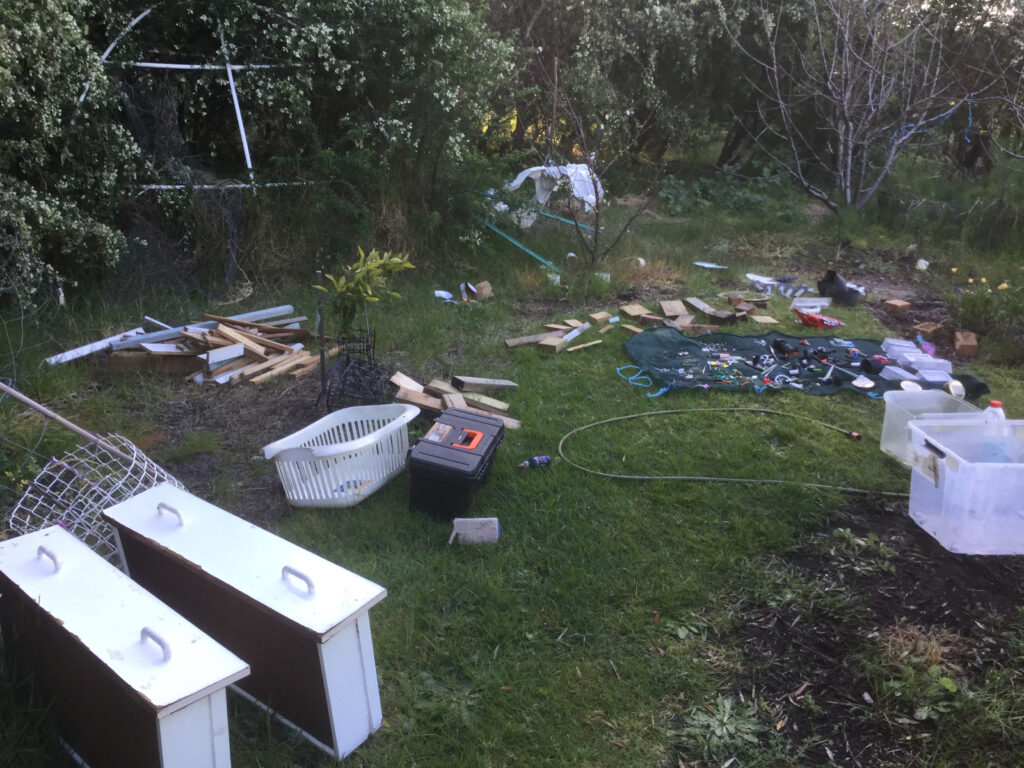
When the fridges were ready, the local delivery service brought them 50km to our place for $150. Professional removalists will save you injuries and hassle and deserve a living. Ours were champions and carried them right into the shed for us across a stretch of bumpy weedy ground. I gave them a Turk’s Turban pumpkin and some home-made berry jam as a thankyou for doing that unprompted despite the less-than-ideal conditions.
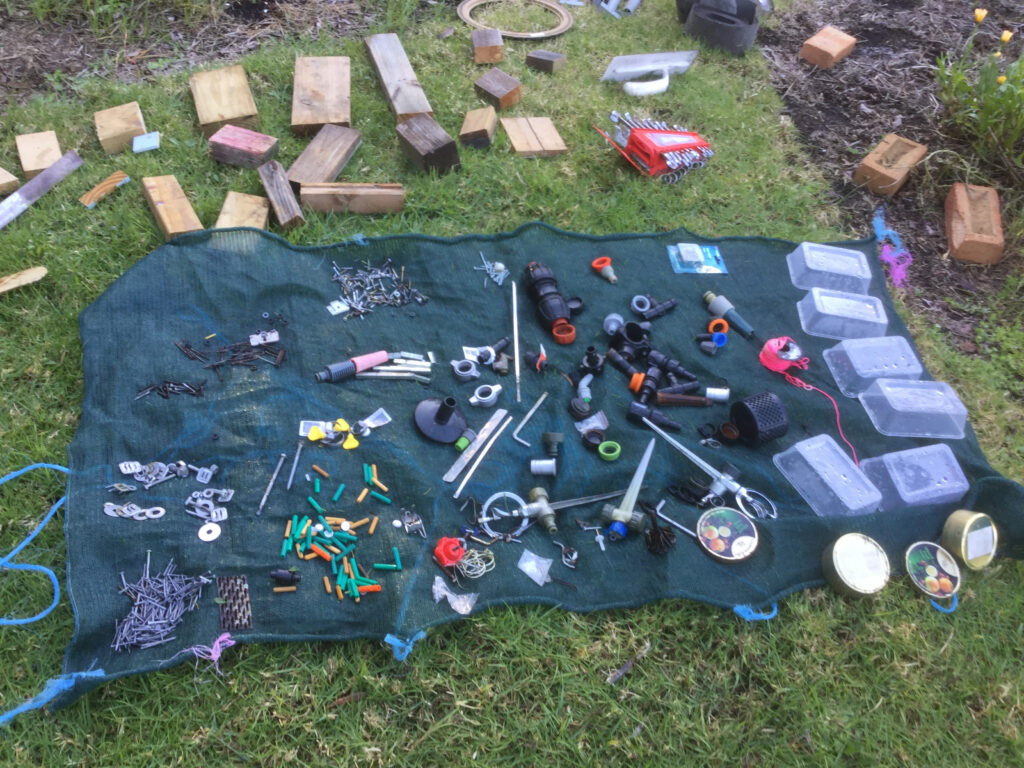
Then came two half-days of hosing out and scrubbing filthy, mouldy fridges until they were showroom hygienic. I rarely use bleach, but the mould required it. One litre, diluted in a spray bottle, did six very dirty fridges inside and out, as well as some of our shed contents that needed sanitising. I used repeated applications especially on the seals, for which I recommend using an old toothbrush. You don’t want any mould or spores remaining in the fridges if you don’t want to see it again down the track.
Every rack, shelf and compartment was dismantled to clean and dry separately, and all the mountings scrubbed with bleach and a toothbrush. Tilt fridges forwards and backwards to get the water out after hosing, and dry with a cloth. Then leave them to air with doors propped wide open in an undercover area with good air circulation for at least a week, before re-assembling the compartments.
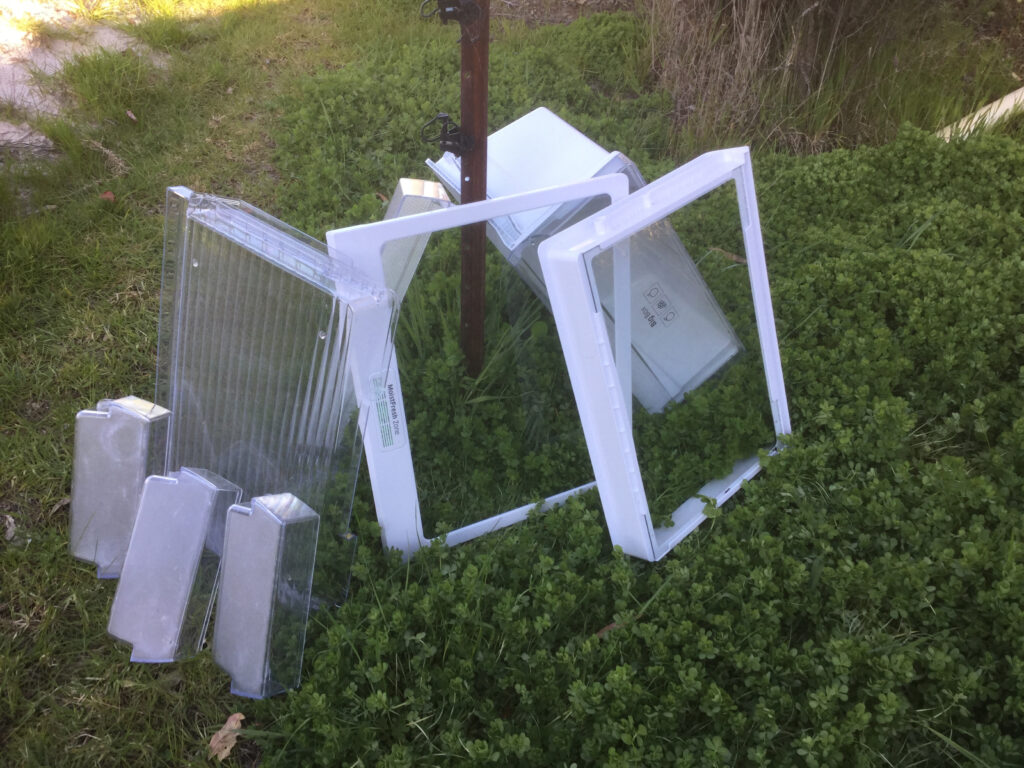
Now comes the fun part you’ve been waiting for: Putting all your stuff away in logical groupings using the many available shelves and compartments. No storage units you can purchase spoil you for choice like this, and none are this resistant to dust and rodents. Also, because fridges are insulated, stored items experience less temperature and humidity variation than in shelves or cupboards; especially good for longevity of electrical items and power tools.
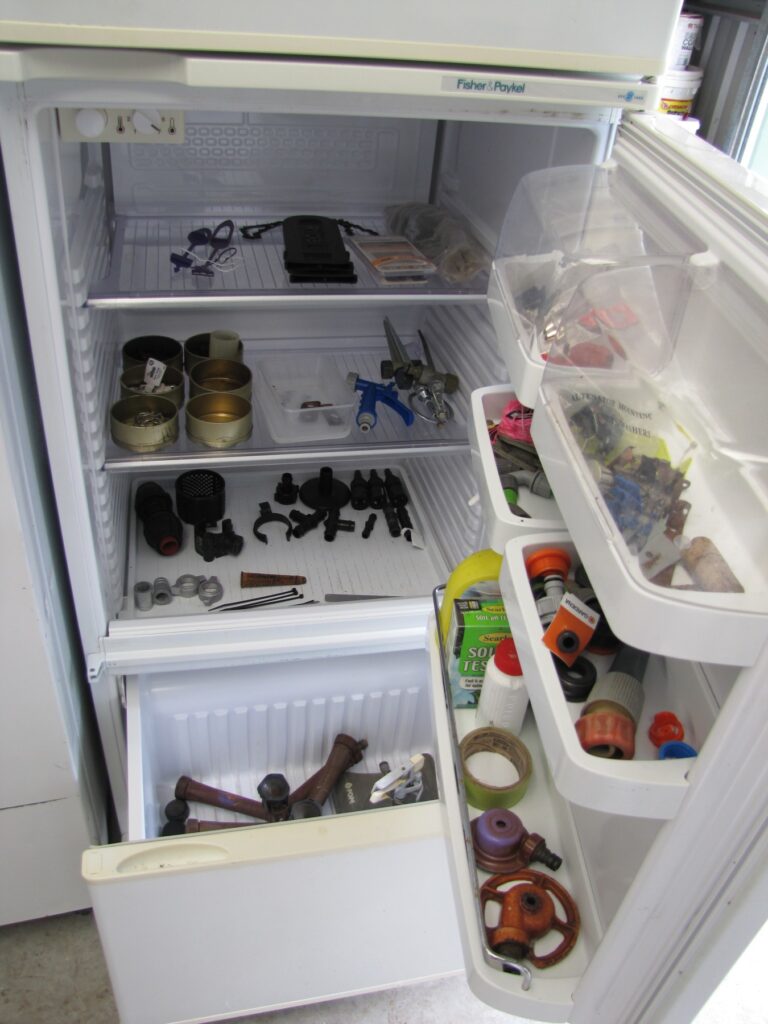
Our six old fridges have a theme each: Fence construction/maintenance items, general tools and fixings, gardening equipment, the man fridge for my husband’s hobbies like archery and making walking sticks, a separate fridge to neatly store all our fruit tree nets, and one for miscellaneous bits and pieces. In addition, we store larger items on top of the fridges, which makes wonderful use of the shed space without creating access problems. I still air the fridges daily by propping doors open for a while in the daytime, to prevent mould and bad smells and just in case there is still water pooled anywhere I can’t see.
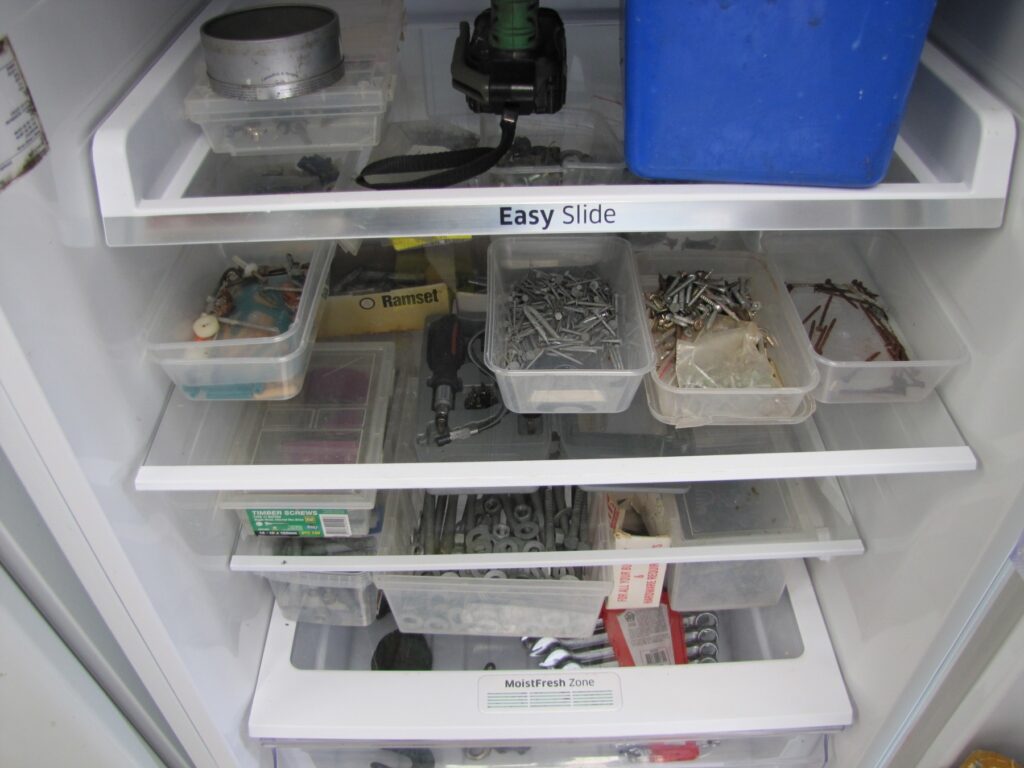
I love our clean, properly organised shed, which is a joy to work in and now has ample space to move around. Rodents have few places left to hide or nest in the building, and can’t get at any of the stored contents. I can find things I need immediately, which saves time and avoids so much stress and frustration; and things in storage stay clean. I only wish I’d had this bright idea at the outset. But better late than never; and perhaps you or someone you know could benefit from this budget and earth-friendly idea.


More about us on https://redmoonsanctuary.com.au
